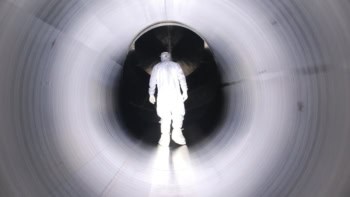The European Physical Society (EPS) awarded four prizes to particle physicists at the International Europhysics Conference on High Energy Physics in Aachen, Germany, yesterday. The prizes recognize outstanding contributions to quantum chromodynamics (QCD), quantum gravity, charge-parity violation and outreach activities.
David Gross of the University of California at Santa Barbara, David Politzer of the California Institute of Technology and Frank Wilczek of the Massachusetts Institute of Technology share the 2003 High Energy Particle Physics Prize. Gross, Politzer and Wilczek are best known for their work on QCD – the theory of the strong force. In particular they showed that the force between two particles in certain types of gauge theories is strong when they are far apart, and weak when they are close together. This ‘asymptotic freedom’ was a crucial step in the development of QCD.
Nima Arkani-Hamed of Harvard University receives the Gribov Medal. In 1998, working with Savas Dimopoulos and Gia Dvali, Arkani-Hamed suggested that the extreme weakness of gravity could be explained by the existence of “large” extra dimensions of space, perhaps as large as 100 microns in size, and that quantum gravitational effects would become important at the electroweak scale rather than the much higher Planck scale. This would allow the effects of quantum gravity to be probed at accelerators and even in table-top experiments.
Guillaume Unal from the Université Paris Sud in France received the Young Particle Physicist Award for his work on charge-parity (CP) violation in the kaon particle. CP violation explains why the universe is made of matter and not antimatter, even though equal amounts of both should have been created in the Big Bang. Unal was also part of the team that discovered the top quark.
The Outreach Prize was shared by Rolf Landua of CERN and Nicholas Tracas of the National Technical University in Athens for communicating the results of high-energy physics research to universities, school students, teachers and the public.



